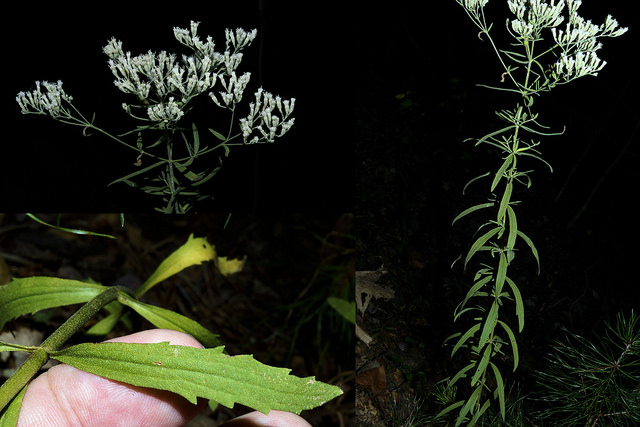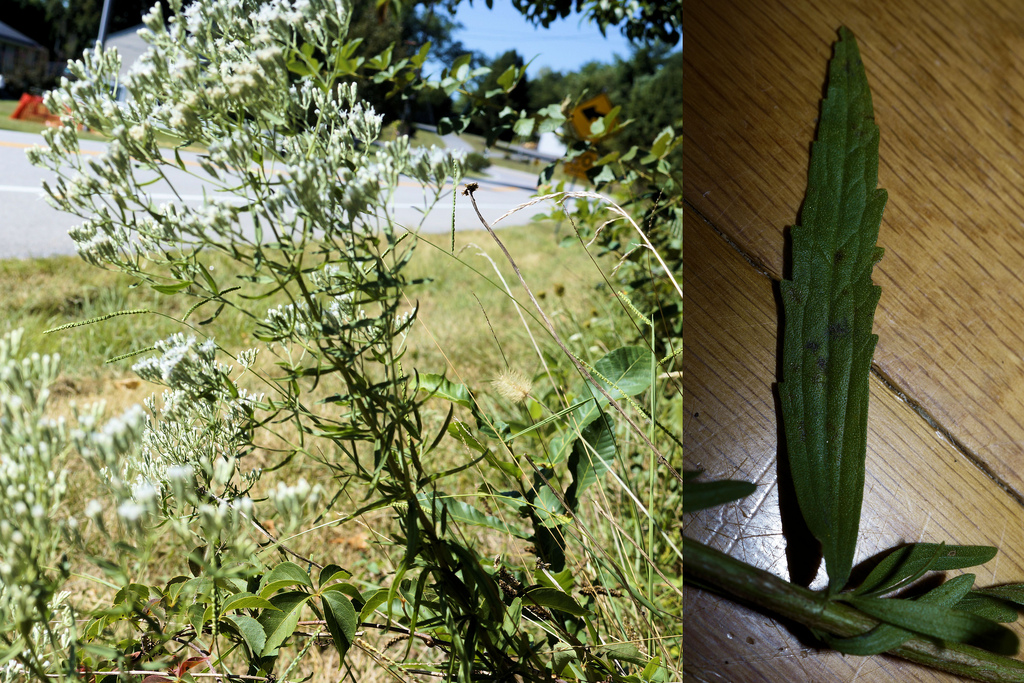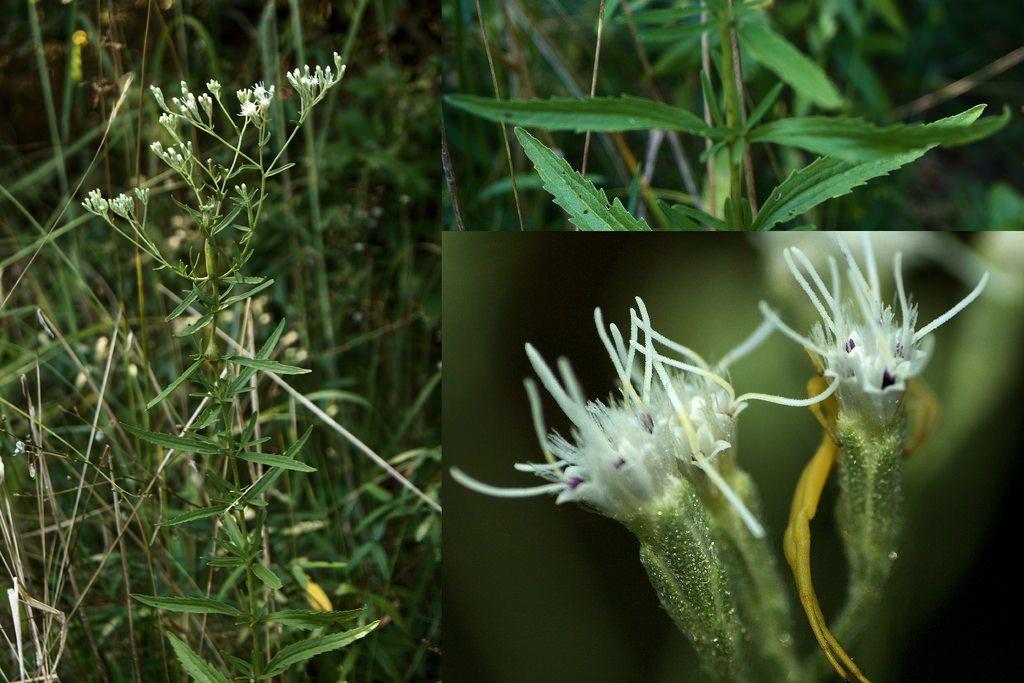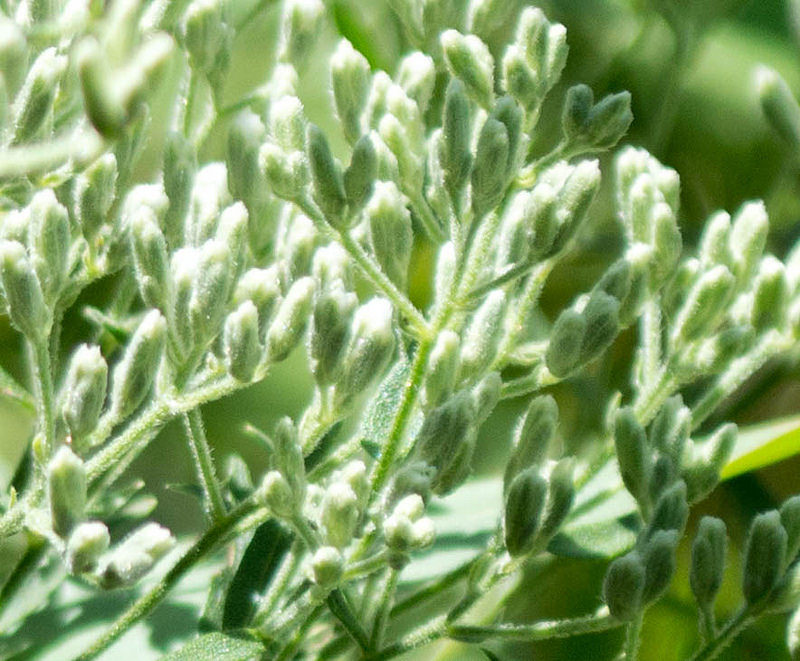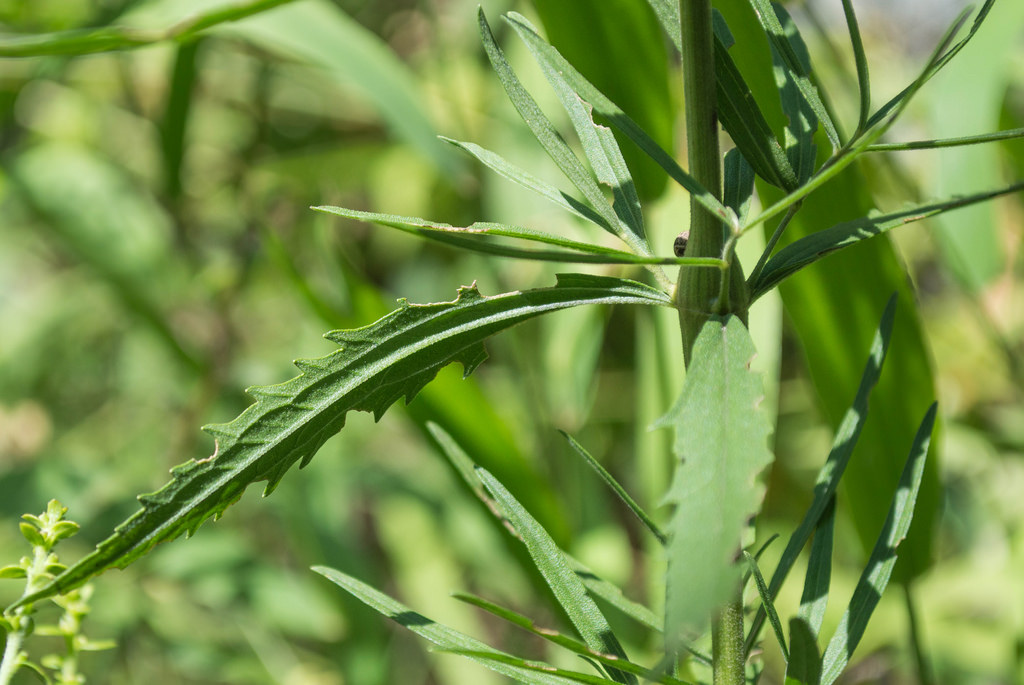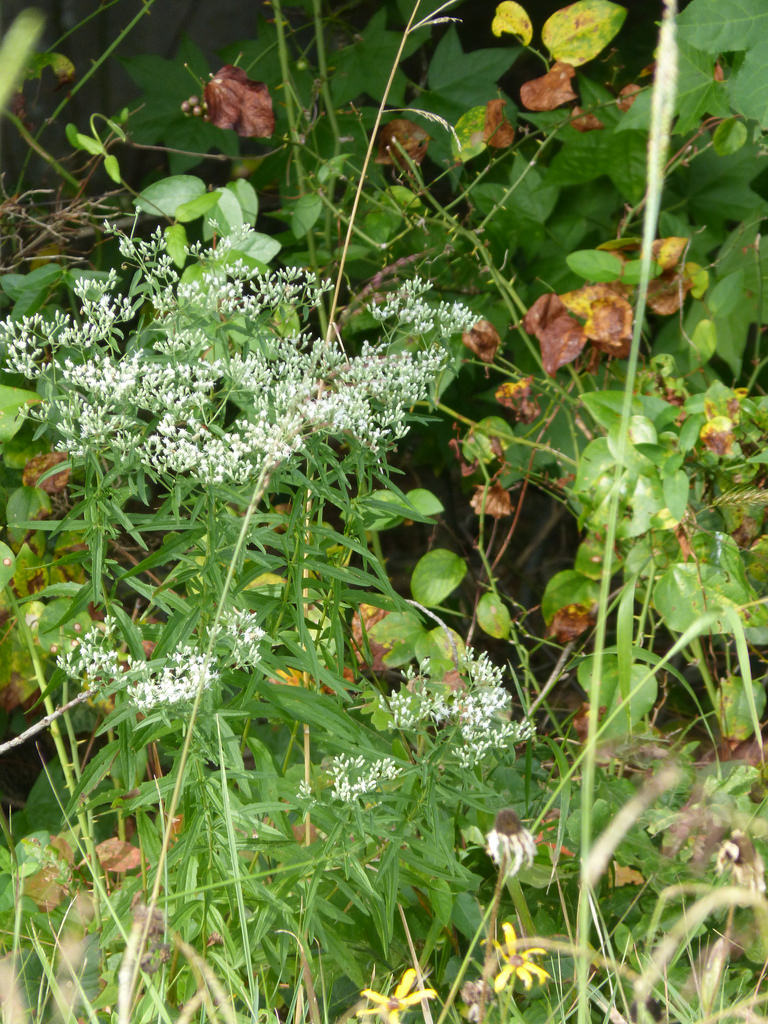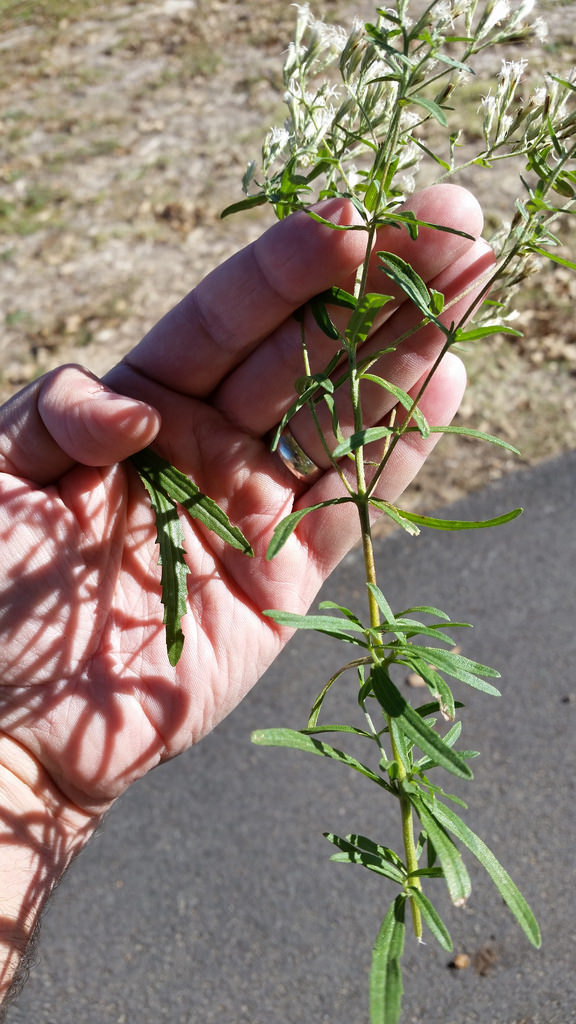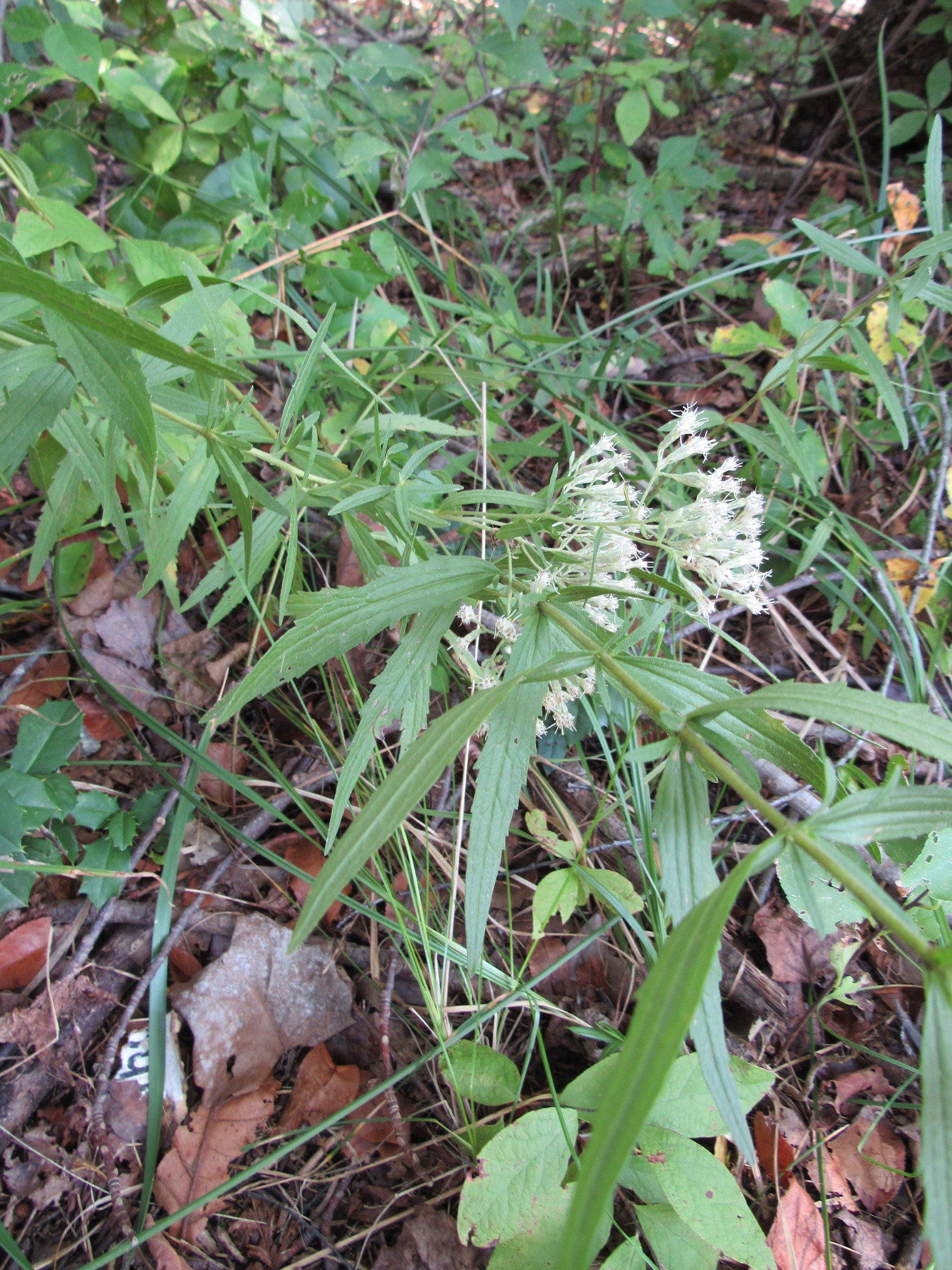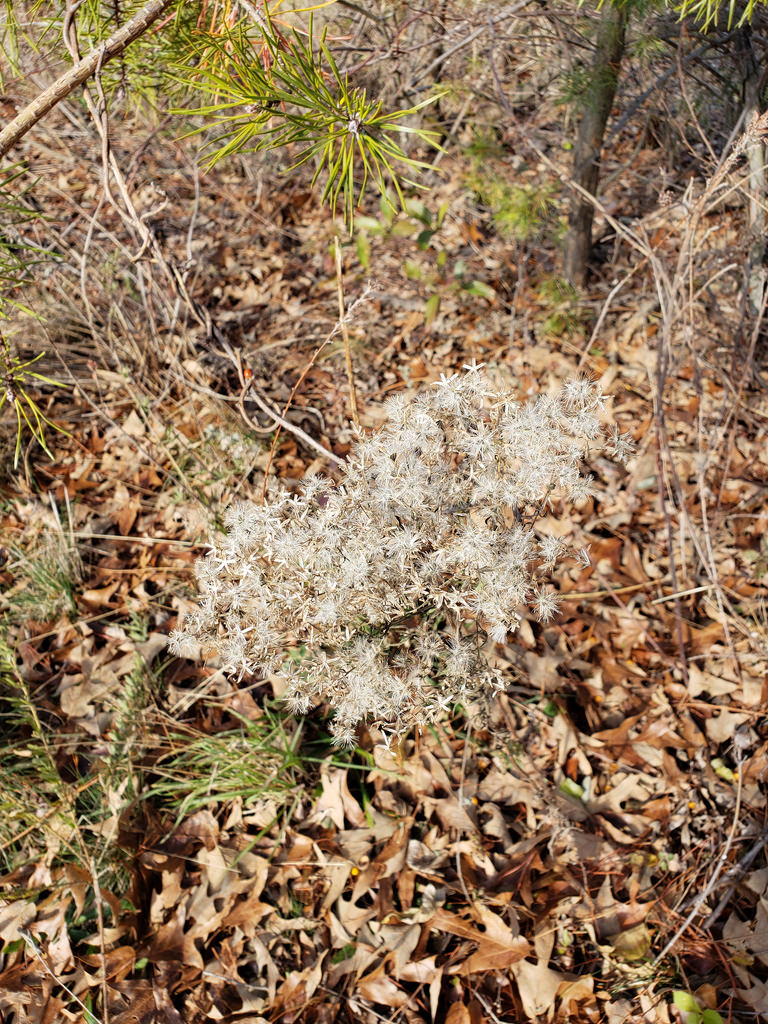Map Snapshot

















147 Records
Description
Compare very similar Hyssop-leaved Thoroughwort.
Seasonality Snapshot
Source: Wikipedia
| Eupatorium hyssopifolium | |
|---|---|

| |
| E. hyssopifolium in bloom. | |
| Scientific classification | |
| Kingdom: | Plantae |
| Clade: | Tracheophytes |
| Clade: | Angiosperms |
| Clade: | Eudicots |
| Clade: | Asterids |
| Order: | Asterales |
| Family: | Asteraceae |
| Genus: | Eupatorium |
| Species: | E. hyssopifolium
|
| Binomial name | |
| Eupatorium hyssopifolium | |
| Synonyms[2] | |
|
Synonymy
| |
Eupatorium hyssopifolium, also known as hyssopleaf thoroughwort, is a fall-blooming herbaceous plant native to North America.[3] Like other members of the genus Eupatorium it has inflorescences containing a large number of very small flower heads, each with 5 white disc florets but no ray florets.[4] At 0.5 to one meter (20-40 inches) tall,[3] it is towards the shorter end of the range of heights found in Eupatorium species.[4]
Plants which are classified as E. hyssopifolium can be either diploid or polyploid, and some of them seem to have been the result of past hybridizations with Eupatorium serotinum. Hybrids with E. album and E. linearifolium also seem to exist. The hybrid E. torreyanum is similar to E. hyssopifolium but is a hybrid of E. serotinum and Eupatorium mohrii.[3]
Eupatorium hyssopifolium is found in much of the eastern and south-central United States, from Massachusetts west to Wisconsin, and as far south as Texas and Florida.[3][5] It grows in moist soils.[6]
- Varieties[3]
- Eupatorium hyssopifolium var. hyssopifolium - leaves 2–5 mm wide
- Eupatorium hyssopifolium var. laciniatum A.Gray - leaves 5–15 mm wide
Uses
[edit]Eupatorium hyssopifolium can be used medicinally (applied externally for insect and reptile bites).[6] It can also be planted near crops to attract beneficial insects.[7]
References
[edit]- ^ "Eupatorium hyssopifolium". NatureServe Explorer. NatureServe. Retrieved 2010-09-12.[permanent dead link]
- ^ "Eupatorium hyssopifolium L.". The Global Compositae Checklist (GCC) – via The Plant List. Note that this website has been superseded by World Flora Online
- ^ a b c d e Siripun, Kunsiri Chaw; Schilling, Edward E. (2006). "Eupatorium hyssopifolium". In Flora of North America Editorial Committee (ed.). Flora of North America North of Mexico (FNA). Vol. 21. New York and Oxford: Oxford University Press – via eFloras.org, Missouri Botanical Garden, St. Louis, MO & Harvard University Herbaria, Cambridge, MA.
- ^ a b Siripun, Kunsiri Chaw; Schilling, Edward E. (2006). "Eupatorium". In Flora of North America Editorial Committee (ed.). Flora of North America North of Mexico (FNA). Vol. 21. New York and Oxford: Oxford University Press – via eFloras.org, Missouri Botanical Garden, St. Louis, MO & Harvard University Herbaria, Cambridge, MA.
- ^ NRCS. "Eupatorium hyssopifolium". PLANTS Database. United States Department of Agriculture (USDA).
- ^ a b "Eupatorium hyssopifolium". Plants for a Future.
- ^ Frank, SD; Shrewsbury, PM; Esiekpe, O (April 2008). "Spatial and temporal variation in natural enemy assemblages on Maryland native plant species". Environmental Entomology. 37 (2): 478–86. doi:10.1603/0046-225X(2008)37[478:SATVIN]2.0.CO;2. ISSN 0046-225X. PMID 18419920.
